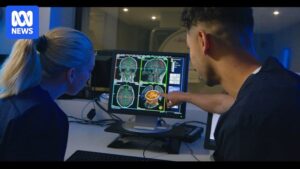
In the early hours of June 24, 2024, in Melbourne’s northern suburbs, tragedy struck as four individuals—Carly Morse, Thomas Vale, Michael Hodgkinson, and Abdul El Sayed—succumbed to what they believed was cocaine. Instead, they had inhaled protonitazene, a synthetic opioid far more potent than heroin. Their deaths underscore a growing crisis in Australia: the infiltration of highly toxic drugs into the black market.
El Sayed’s uncle, Cory Lewis, discovered the grim scene after his nephew failed to return home. Breaking into the unit, he found the four victims unresponsive, each having died within minutes of each other, according to a coroner’s report. The incident highlights the deadly nature of nitazenes, synthetic opioids that are up to 500 times stronger than heroin.
The Growing Threat of Nitazenes
Nitazenes, developed in the 1950s as analgesics, have never been approved for medical use. Yet, they are increasingly found in illicit markets, masquerading as other drugs. From vapes to counterfeit pills, these substances are often unknowingly consumed by users, leading to fatal overdoses. The Australian federal police have likened using nitazenes to playing “Russian roulette,” given their extreme potency.
Since their first detection in Australia in 2021, nitazenes have been linked to numerous overdose deaths. The Australian Border Force has intercepted these drugs over 60 times, mostly in postal shipments. Despite these efforts, the scale of the threat remains immense, with even minute quantities capable of causing death.
Calls for Action and Prevention
The deaths in Broadmeadows have reignited debates over drug policy in Australia. Conservative voices warn against the dangers of illicit drugs, while harm-reduction advocates push for measures such as drug-checking services. In 2024, a Victorian coroner highlighted the need for such services, citing multiple overdose cases involving nitazenes.
“It is impossible to know for certain whether SL would have submitted a sample of the substance he injected on or prior to 5 December 2022 to a Victorian drug-checking service, had one existed at the time,” coroner Ingrid Giles stated in March 2024.
In response, the Victorian government announced a trial for a drug-checking service, aiming to prevent future tragedies. However, this move is not without controversy. Queensland, for example, has opted against pill-testing, with officials arguing that it legitimizes drug use.
Expert Insights and Future Implications
Associate Professor Dimitri Gerostamoulos, a chief toxicologist, has emphasized the dangers of nitazenes, which can cause rapid respiratory depression and death. He advocates for naloxone availability, drug-testing services, and education to combat the rising tide of nitazene-related deaths.
“Even first responders must be cautious not to inhale nitazenes at overdose scenes,” Gerostamoulos warned, highlighting the drugs’ perilous potency.
Despite the challenges, there are efforts to improve detection and prevention. The University of Queensland has pioneered wastewater analysis to track nitazenes, a method that could provide crucial data on drug prevalence. However, the complexity of detecting such potent substances remains a significant hurdle.
The Broader Impact and Legal Challenges
Despite the growing number of deaths, prosecutions for trafficking nitazenes remain rare. In the Broadmeadows case, police lacked sufficient evidence to charge anyone with supplying the lethal drugs. Encrypted messaging apps like Signal complicate investigations, allowing dealers to operate with relative anonymity.
As Australia grapples with this crisis, the need for comprehensive strategies becomes increasingly urgent. The interplay of law enforcement, public health, and policy reform will be crucial in addressing the dangers posed by nitazenes and preventing further loss of life.
Moving forward, the focus will likely shift towards enhancing drug education, expanding harm-reduction services, and improving detection methods to mitigate the impact of these deadly substances on Australian communities.







